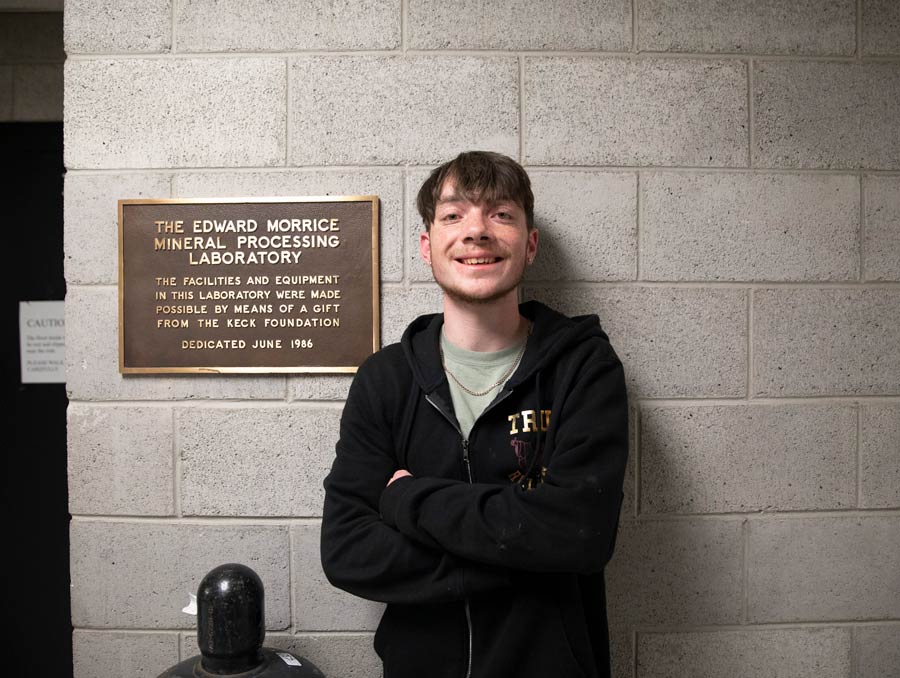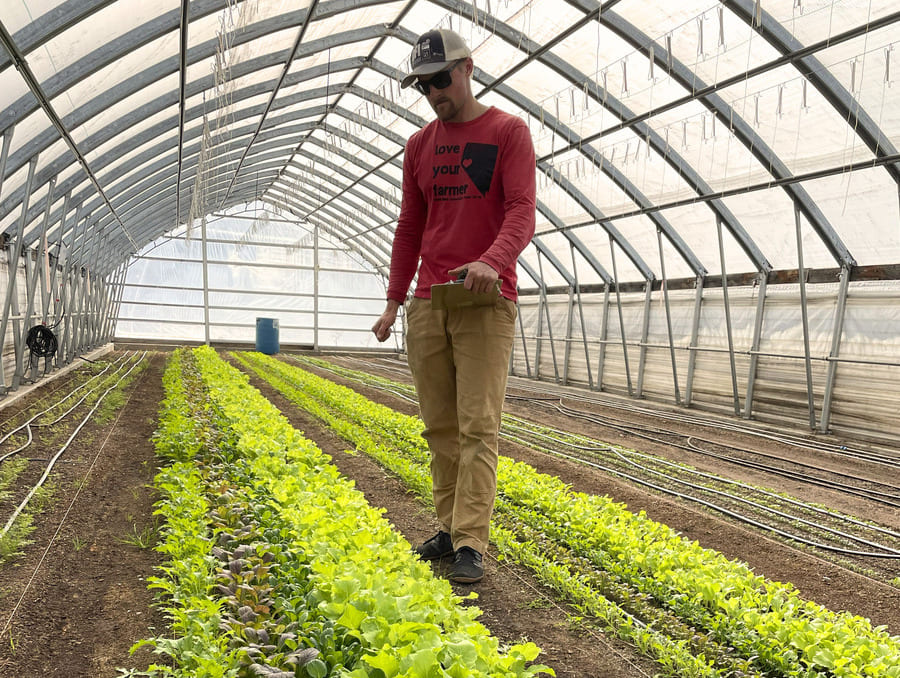First year student Tristan Morrice has long been interested in minerals and mining, but when he was in high school, Tristan wasn’t sure what his career might look like.
“I didn’t even know what I wanted to do,” Tristan said. “But my parents were talking to me about my grandpa and his stories and, I don't know, it just fascinated me with mining. Then also, looking into it, how there's a lot of opportunities in mining and [the Mackay School] is one of the best mining schools.”
Tristan has several Wolf Pack alumni in his family, including his grandfather, Edward Morrice, and both his parents (his mother majored in education and his father majored in mathematics).
Though Tristan didn’t have an opportunity to meet his grandfather, who passed away in 1986, he still inspired Tristan. His parents showed Tristan his grandfather’s rock collection which piqued Tristan’s interest, and when Tristan was in elementary school at the University’s Early Learning Center, his father brought him to the south end of campus, in the Paul Laxalt Mineral Research building. There, at the bottom floor, was a plaque bearing Edward Morrice’s name.
Edward Morrice received his bachelor’s degree in geological engineering and his master’s degree in metallurgical engineering from the University of Nevada, Reno’s Mackay School.
After graduating, Edward worked for the U.S. Bureau of Mines. The U.S. Bureau of Mines was a federal agency (different from the current state agency, the Nevada Bureau of Mines and Geology). Edward became an expert in mineral processing, even patenting a floatation method.
Ross Smith, a professor in the Mackay School, reached out to Edward in the 1980s, asking if he would be interested in supporting a mineral processing laboratory being built on the University campus. At the time, Edward was battling stage four cancer, but agreed to support the lab.
“It was kind of a bittersweet moment,” Tristan said.
It was an opportunity for his grandfather to give back to the University before he passed away. A plaque outside of the mineral processing laboratory bears Edward Morrice’s name, recalling his contributions.
Today, Tristan is following in his grandfather’s footsteps. He’s majoring in mining engineering and plans to become a mine manager to help move minerals from the earth to the hands of people like his grandfather.














